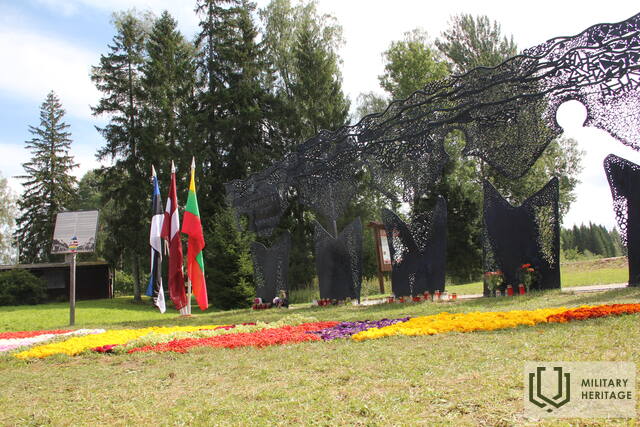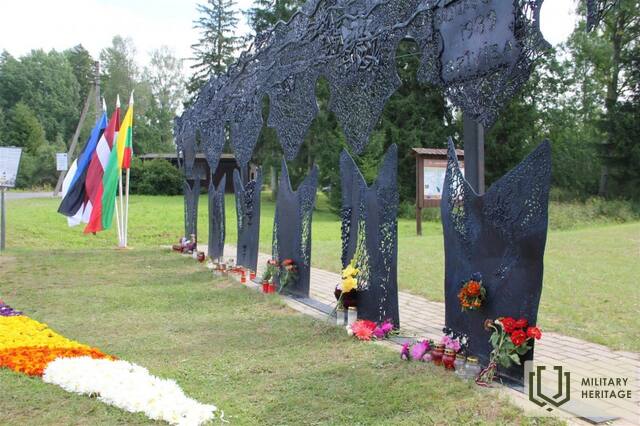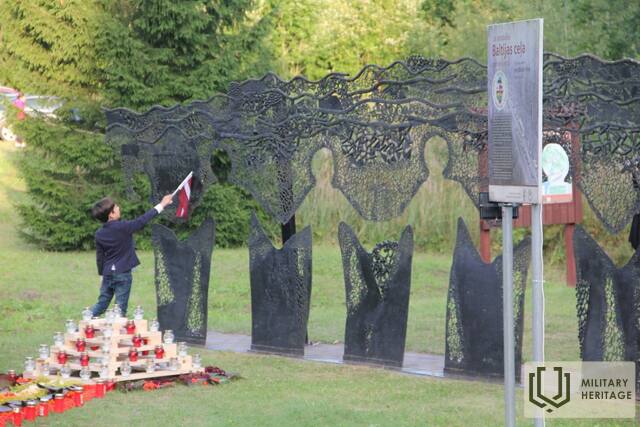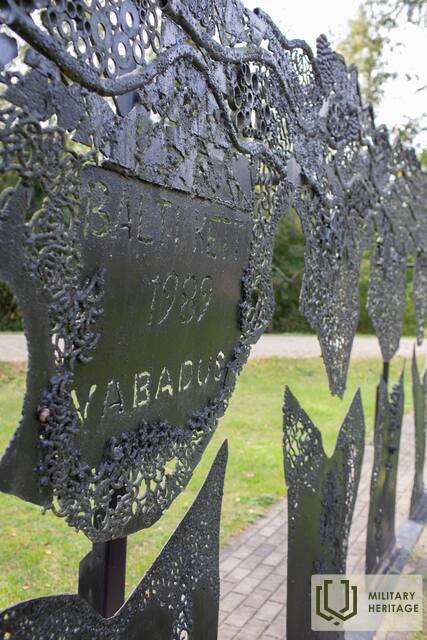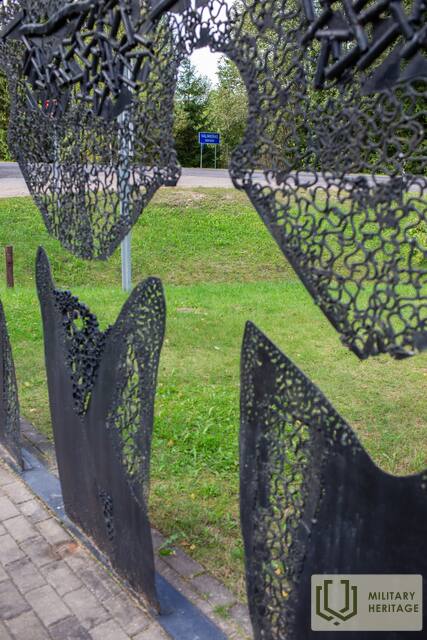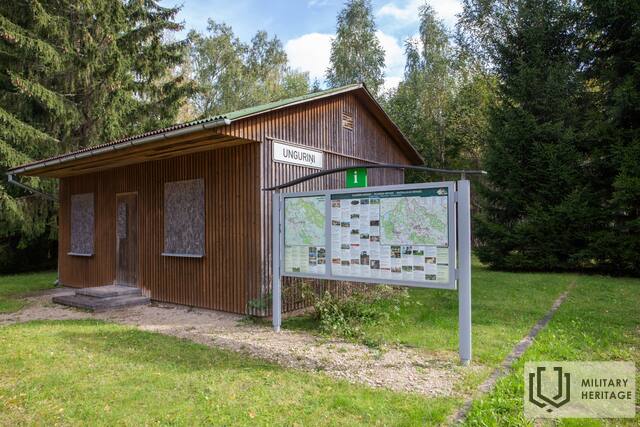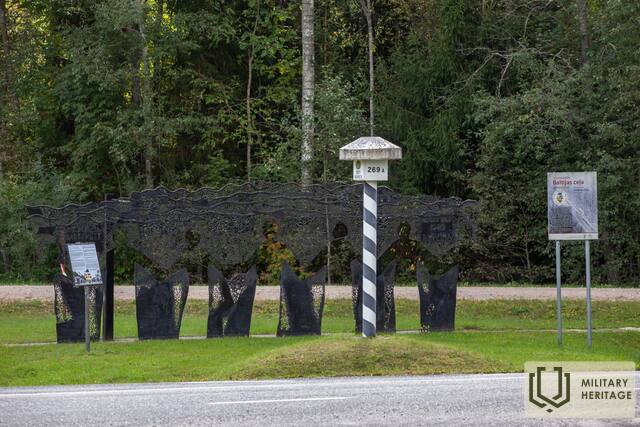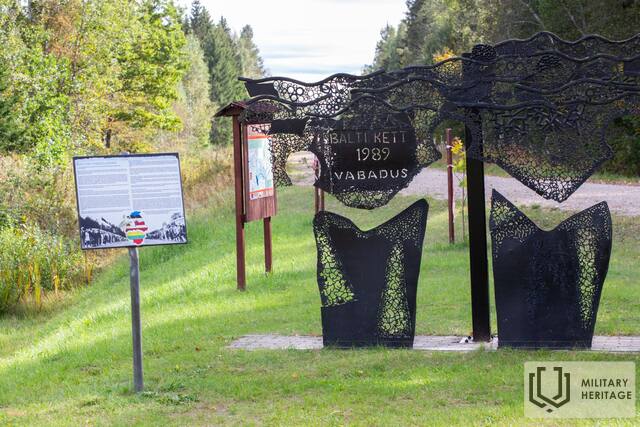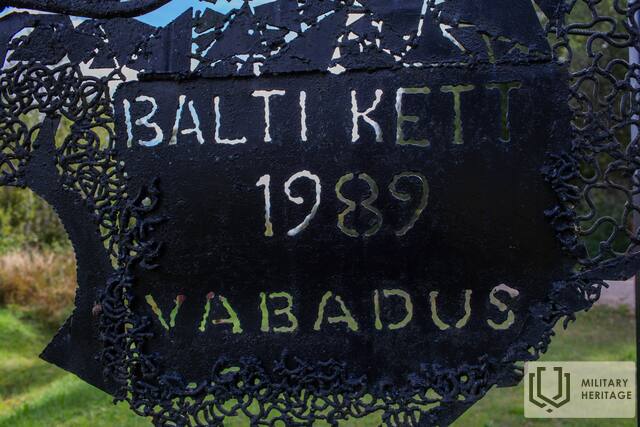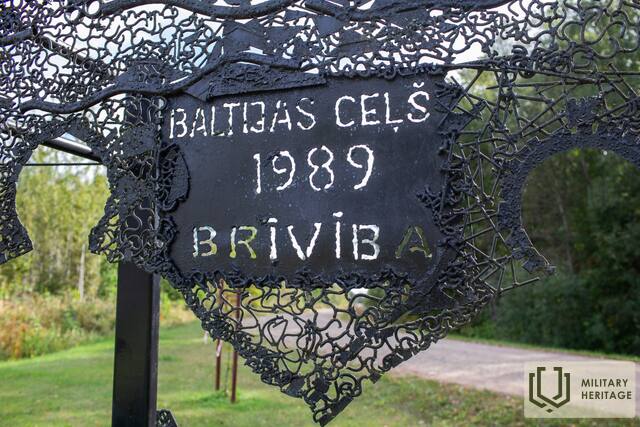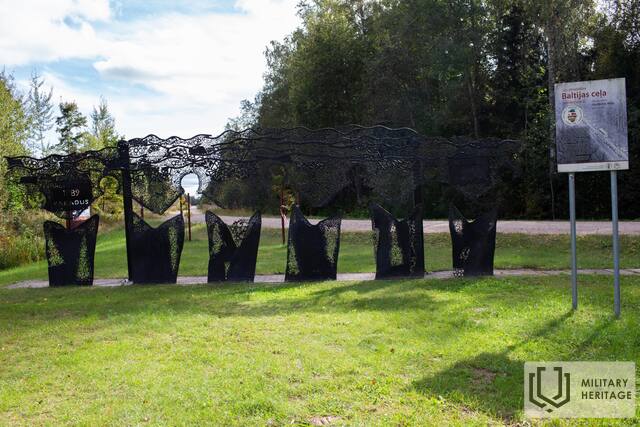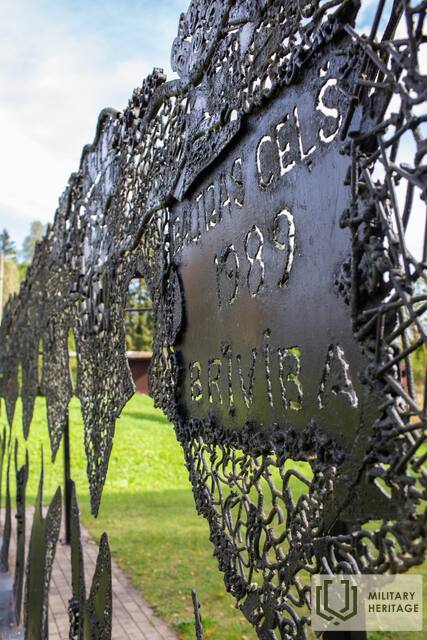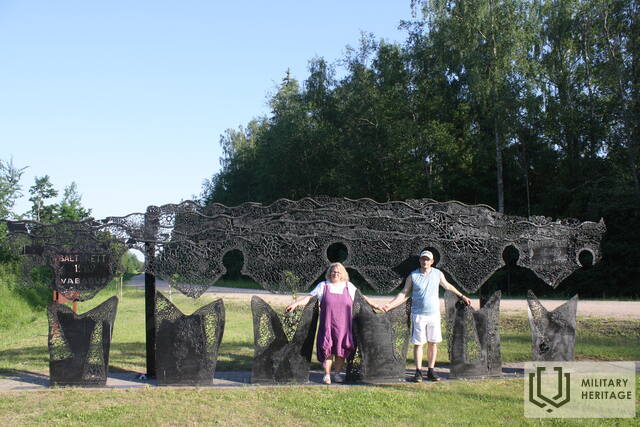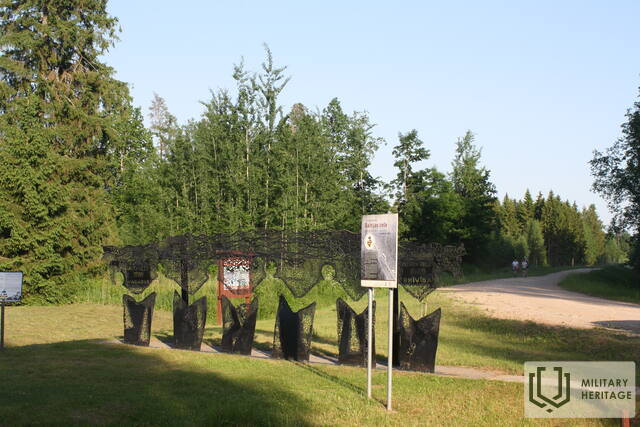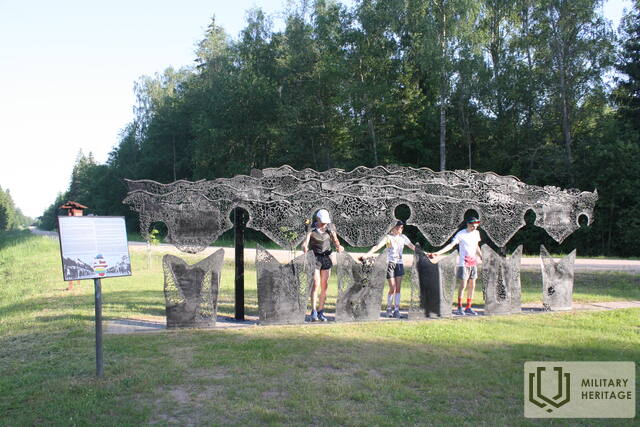Skulptūra, skirta Baltijos keliui Memorialinė vieta

 165
165


Įsikūręs Ungurinių-Lilių pasienio punkte tarp Latvijos ir Estijos.
2009 m. pavasarį Ķonių parapijos savivaldybė, kurios teritorija ribojasi su Estija, bendradarbiaudama su metalo menininku Andriu Dukuru sukūrė skulptūrą, skirtą „Baltijos kelio“ dvidešimtmečiui.
Devynių metrų ilgio ir dviejų su puse metro aukščio skulptūra su žmonių siluetais, kur galima atsistoti ir laikytis už rankų tuščiose žmonių siluetų vietose. Skulptūros idėja leidžia praplėsti laiko dimensiją ir ne tik prisiminti 1989 m. gyvų žmonių grandinę, bet ir suteikia galimybę bet kuriuo metu kartu su skulptūra tapti „Baltijos kelio“ dalimi.
Vaizdo įrašas apie skulptūros sukūrimą.
Baltijos kelias buvo unikali akcija ne tik Baltijos šalyse, bet ir Europos bei net pasaulio mastu. Dar niekada trijų šalių gyventojai nebuvo susivieniję į gyvą dalyvių grandinę, jungiančią šalių sostines – Vilnių, Rygą ir Taliną. Istorinis įvykis įvyko 1989 m. rugpjūčio 23 d. vakarą, jis suvienijo apie 2 milijonus žmonių. Jo tikslas buvo atkreipti dėmesį ir prisiminti 50 metų senumo įvykius – Ribentropo-Molotovo pakto sudarymą. Dėl to dvi tuometinės supervalstybės – Vokietija ir SSRS – iki kito pasaulinio karo perskirstė įtakos sferas Europoje, tačiau Baltijos valstybės prarado nepriklausomybę.
Maždaug 600 km ilgio dalyvių grandinė Latvijoje žymėjo Baltijos kelią nuo Bauskės iki Rygos, toliau iki Siguldos, Cėsių, Valmieros ir Rūjienos.
Panaudoti šaltiniai ir literatūra:
https://www.delfi.lv/novados/rujienas-novads/zinas/ka-rujiena-tapa-baltijas-celam-veltita-skulptura.d?id=43582297
https://www.celotajs.lv/lv/e/story/view/baltijas_cels/ff808181580af35f01580b3709dd0002?7
http://www.biblioteka.valmiera.lv/sites/default/files/Buklets_Baltijas_celam_25.pdf




